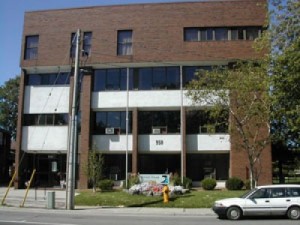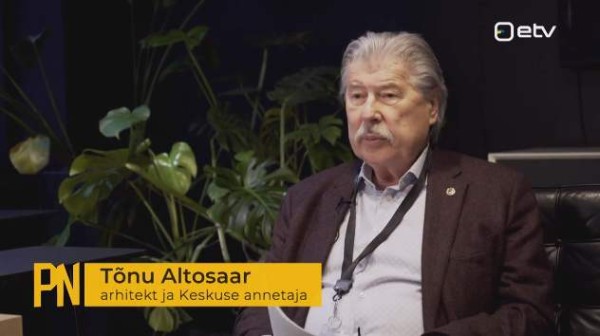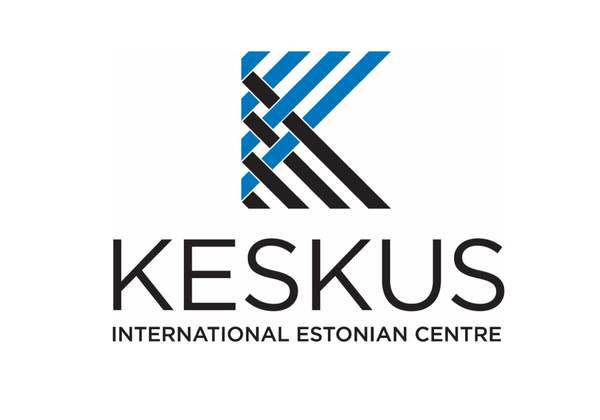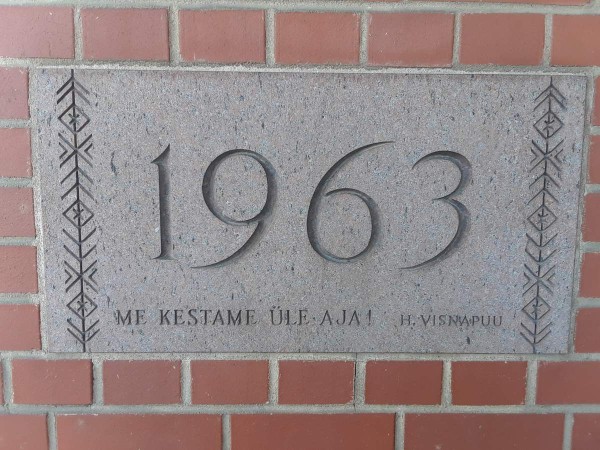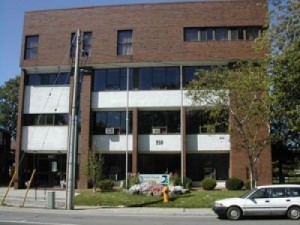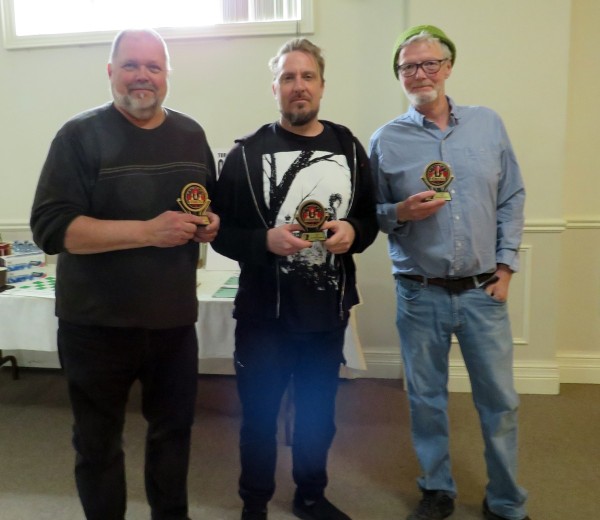
Estonian House Concerns and Future Estonian Life (7)
Toronto Eesti Maja tulevik | 23 Dec 2017 | EL (Estonian Life)Eesti Elu
Eda Sepp
Translated by Alja Pirosok
In the Toronto Estonian community I am concerned about the political party-like orientation of the Boards of the 4 Organizations (Madisonites), which is notably autocratic and propagandist. If it did not bear on the future of the Toronto Estonian House and its survival, there would be no need to undertake writing an article, but in analyzing closely the Madisonites’ latest explanatory articles on “the state of affairs” and future vision, there comes to the fore an alarming one-sidedness and blurring of information. In addition, their political party-like presentations are often sprinkled with skilful disinformation. (Wikipedia: any government (or other) communication containing intentionally false and misleading material often combined selectively with true information which seeks to mislead and manipulate a mass audience. . .or public opinion). Examples of this could be seen in the last American election, although the concept and term “disinformation” as used today originated in Russia as early as the 1920’s. The foundation of a democratic society is an elected multi-party system, in which each has its own firm program, but the use of disinformation now often appears in inter-party scuffles and manoeuvring. This we experience in the media all the time. A free, investigative journalism and media, together with freedom of speech, are vital for the protection of democratic society.
In the Madisonites’ articles the claim is made that “extensive community discussions in different locations” have been organized and even “for several years”, along with “community consultations, where the majority of participants favoured the pooling of all available resources and moving in the direction of Tartu College”. This is not true. Discussions and consultations presuppose considering and listening to the other side and to different positions. A fundamental principle of democracy is Audiator et altera pars – “Listen also to the other side” (Prof. Karl Aun, founding meeting of “Altera” group, Toronto, January 1991). The Madisonites have not taken into consideration information from specialists which does not coincide with their propaganda. For example, the critical points of view of architect Guido Laikve, engineers Lembit Maimets and Toomas Saar, journalist Allan Meiusi and others which are contrary to the Madisonites’ and their propaganda, have been ignored. It is claimed that “the Estonian House is no longer sustainable financially”. This is not true, as experts whom the Madisonites disregard have all testified. We ask, then, is the old house at 11 Madison Avenue, which was built about the same time as Chester Public School in 1891, more sustainable? Ignored, too, have been points of view which express doubts about the suitability of the Madison project as the community’s only centre and about the consolidation of the entire Estonian society into one smaller building in a downtown location without parking. It is unfortunate that real consultations and discussions with the community did not take place already at the outset of the projects, where many options would have been considered, including building near Tartu College with a financial opportunity other than the sale of Estonian House.
It is written that Estonian society in Canada will shrink in the future anyway and so a much smaller house should be built now and the whole still vibrant community forcefully thrust into it. It is said that “sustainability” and a “more certain future” will be achieved that way. It is not understood that actually now, in so doing, the whole Toronto Estonian diaspora, while the community is still vibrant, will be artificially diminished in the name of that “future”. To be sure, there will always be a part of the Toronto Estonian society that assimilates, a part will disappear, but the homeland has been a continuous source of new members who have come here. It is our experience, too, that many middle –aged and young people have come to Estonian society looking for their roots. Many of them have visited the Estonian House store as the only open Estonian place where they can get information. Surely they too will need their familiar community. It does not pay to predict the future, it may bring many surprises. It is more useful to engage with the present.
The Madisonites’ authoritarian attempt to consolidate the community has created much bad feeling and dissonance in Estonian society. It is not true, as they claim, that most of the society favours “moving in the direction of Tartu College”. The vote in favour of the project was achieved with a very slim majority, only 10 votes. A two-thirds vote was required for the sale of Estonian House, but considering that the turnout this time was huge, the line stretched around Estonian House and many left. People could not wait longer. This is shown by the fact that the number of registered voters was greater than those who voted, and even in the blocs not all members were in favour of the sale of Estonian House. We can conclude that the Madisonites’ win was very narrow, or perhaps even non-existent, since the call for a recount was refused. The vigorous, authoritarian push and use of disinformation has created much disharmony and controversy in the society. We ask, in whose interest is the current dissonance and artificial diminishing of the Estonian diaspora?
For example, it is an outright lie, that there will be in the Madison building a great hall. The only hall with a stage the size of the hall in Estonian House is located in a schoolhouse to the south of the major traffic route of Bloor Street. According to the architect the largest hall in the Madison project is smaller than the middle Crystal Hall at Estonian House. There is no room there for a stage, even though it is a “flex space”. There is also no room for a piano, tables, chairs, electronic equipment and much else that requires storage space as different events take place. The so-called “flex space” means that there is no stable place for different events and storage. The interior walls can be changed and moved off every which way if necessary, but the outer walls still determine boundaries.
As for the absence of parking, of which there has been much talk in commentaries, there is now the substitute of a so-called “drop-off”. So toddlers can be left in the nursery while one drives around the neighbourhood looking for an available parking spot: “there are 206 parking spaces in the immediate vicinity of the centre. There are 30 underground parking spots and 32 in the parking lot directly to the east of 9 Madison Avenue”. Huron Street, to which there is a pedestrian thoroughfare under the large hall of the building, is located east of Madison Avenue, but it is not possible to get there directly by car. This means that there are no close parking opportunities and the closest parking spots are the same distance as the subway.
It is interesting that the thoroughfare from the front of the building to Huron Street (the front garden) has become a “beautiful outdoor space that can be enjoyed for special events and quiet contemplation”. The square is public and would surely appeal to panhandlers and street musicians. Curious, too, is the notion recently grafted upon the design of the building, “Estonian Nordic aesthetic”. What does this mean? I see the most resemblance to Alar Kongats’s student centre at Scarborough’s Centennial College which won a Governor General’s award in 2002. It is a low building with a protruding upper floor, the description of which includes a “transparent skin, shimmering surface” and inside the so-called “flex space”. But Nordic? I’d say, more International... The rules of disinformation allow for giving the public a so-called “half-truth”, where the important part is omitted.
Apparently it is not desirable to make public how much has been offered to the city for the parking lot. But what could be made public is how much the Estonian Credit Union will be asking for the building at 11 Madison Avenue. That amount “will be sold to the Estonian Centre Project”, which should be deducted from the money received from Estonian House. Even if prices fluctuate, it is still possible to add up what was paid for the building and how much it has cost so far, even standing empty and with subsequent renovation costs. It could be made known whether the bank wants to get back the exact amount of what the house has cost them or the house will be assessed by real estate specialists at the time of sale, when the amount may be much greater. The bank, as a participant in the Madison project, should make public to us its plans. Since these are connected with the sale of Estonian House, this should be of interest both to Estonian shareholders and to the entire Estonian society. And what about the Estonian Foundation of Canada’s buildings? It is written that the Foundation’s 3 properties “will be included in the site to enlarge the property footprint and make it more attractive for a new owner or developer”. Yet at the same time: “EFC will get back fair value for its properties”. What is fair value? EFC should specify how this will take place. How big is the mortgage loan, how much will be kept by EFC, and what will be added to the value of Estonian House in the project? Will the Foundation give or profit? And how much? Does the so-called “fair value” refer to actual costs or to “market price”? We ask, too, what will start happening at the 11 Madison Avenue building when it is tied to the new project? We know that demolition is prohibited. The new projected building requires the back yard of this house. That is in the plan. But what will be happening in the house itself, which was originally built as a residential building at the same time as Chester Public School?
It is written that “the two centres will remain separate” but “there will be opportunities for cost sharing, event synergies, collaboration and exploration of new ideas”. How will this take place? Who will own the new centre, especially when the bank wants its money back and it seems the financer is only Estonian House, not even the Foundation. Into which building will the bank go? In the project description it is made known, although there is “flex space” negotiations are underway with future tenants. It should be made public whether in the new building there is even enough room for the needs of the bank and whether this would be without parking a suitable location. Now there are rumours that Tartu College is holding for the bank its own restaurant’s rooms facing Bloor Street. If so, then Tartu College and not 9 Madison will start receiving the rent (“two centres will remain separate”). Tartu College now has a huge loan. Rent from the bank would surely be very much needed. There has not been enough money either for the planned museum building, which was designed long ago and would remain between the two buildings, but which has been announced in the neighbourhood together with the new project. How and by whom will it be managed? For sure the new building will lack the same restaurant opportunity with several kitchens that Estonian House has. A store, where Estonian books, films, records, and so forth are sold, is not envisioned. Also gone are the young people’s rooms, the hall with a stage, art gallery hall, and parking lot. Tartu College is a so-called “secure building” where the doors are locked so uninvited vagrants do not step in from the street. The doors there are open only for special events.
Another concern is the Madisonites’ authoritarian, anti-democratic tone. They lead (that word is used a lot). Will this happen the way of the Madisonites’ “consultations” and “discussions” where different positions are not heard and considered? It is written that the new centre will “bring services, community undertakings and organizations together in the same place, to serve the needs of the Estonian community now and in the future” and that “project managers and expert consultants are leading the process ... are verifying the cost”! That sounds already certain and also quite dictatorial. In an article dated 25.10.17 it is written “Consolidating our community under one banner [müts] is the basis of sustainability”. This “one banner” concerns me, as that is what dictators have always asserted. What banner is it? Assurances are made that the “project leaders” are discussing possibilities with the city and the architect and the community may “give an opinion” when the project is already complete, not have their say: “the Estonian community will be consulted as the plans evolve and the use of space is finalized”. This is making aware, not consulting, where a “solid vision” for the future of the community has already been shaped as is noted in the title.
We ask, then, who will have power over the new building? The question of power is significant, not a vague future question to be resolved by so-called “due diligence”. The sale of Estonian House is financing a part of the first phase. Without the money from Estonian House the Madison Avenue project, as it is planned, will not begin to be built. But from the sale of Estonian House is expected also power over the whole of a large Estonian community. That is as important as the money. In the article “Estonian Centre Update: a strong vision for the future of our community”, it is written: “Southern Ontario is home to one of the largest Estonian communities in the world outside Estonia ... [Estonian House] has for decades been for the Estonians of Southern Ontario the most important place”, but now “the new Estonian Centre will consolidate the largest Estonian community in Canada”. Power and the core of the society, which before were at Estonian House and united a large part of Estonians in the world, will then be concentrated in the new project and Estonian House as a competitor will no longer exist. That explains why it is written that the sale of Estonian House and consolidation in the direction of Tartu College has been planned already for years. Until now each of the buildings has had a distinctive role in the diaspora, which do not overlap. Now there is a will to destroy one, and to “consolidate” everything at Tartu College. This is a cause for serious concern. In a democracy it is difference and diversity that are important, and they create many different “centres” and together the diaspora. When the money is in hand, and Estonian House is sold, there perhaps will be no more need for the current leadership of Estonian House as the representative of the shareholders. In any case it seems they have had the least decision-making power. The interest lies elsewhere. In the financial world a firm’s vigorous, single-valued strong direction may be useful, but in a democratic society this is dangerous.
Personally I have nothing against the projected building on Madison Avenue. I find it an altogether fine building, but not at all suitable for the Estonian community as a replacement for Estonian House. This I have substantiated in my five articles. I am against the sale of Estonian House, because the consolidation of the society in whatever state would diminish the present diaspora in Toronto. I am categorically opposed to the forced squeezing of the community into a smaller place, for which the reason given is the future. It is certain that a dwindling will be achieved artificially, since the projected building cannot hold a large part of the society. The Madisonites’ propagandist declarations have not persuaded me otherwise. It is also no news that such an authoritarian, antidemocratic attempt at consolidation has created much bad feeling and dissonance in Toronto Estonian society. We ask again, in whose interest? An authoritarian “under one banner” Estonian diaspora is a cause of great concern to me. Furthermore, there is a danger, that if Estonian House is sold and there is not enough money for the whole planned project, which in light of present considerations is altogether likely, then we will be without our Estonian House nor will there be anything new to replace it.
Viimased kommentaarid
Kommentaarid on kirjutatud EWR lugejate poolt. Nende sisu ei pruugi ühtida EWR toimetuse seisukohtadega.
There are issues of accountability for the publisher, Tartu College.
I was told the problem was print space. We're also talking about relevance to readers who rely on the traditional print edition for their Estonian news.
Translating an analysis takes time and expertise. Reasoning and empirical reality are antidotes to the disinformation about which the English editor of EE wrote recently in the context of Estonia. These require more space. Yet an article that attends to the same critical issue in the Canadian context has been refused space in English in the print edition. In whose interest is this?
Citizens cannot defend their interests if the news they consume does not adequately cover the issues that concern them.
I was told the problem was print space. We're also talking about relevance to readers who rely on the traditional print edition for their Estonian news.
Translating an analysis takes time and expertise. Reasoning and empirical reality are antidotes to the disinformation about which the English editor of EE wrote recently in the context of Estonia. These require more space. Yet an article that attends to the same critical issue in the Canadian context has been refused space in English in the print edition. In whose interest is this?
Citizens cannot defend their interests if the news they consume does not adequately cover the issues that concern them.
Sorry for the lack of clarity!
For translations, sometimes 'Google Translate', which can be found at https://translate.google.ca can be helpful to at least get the gist of what the text means.
You just copy and paste the text you want translated, and choose the languages that need to be translated.
For translations, sometimes 'Google Translate', which can be found at https://translate.google.ca can be helpful to at least get the gist of what the text means.
You just copy and paste the text you want translated, and choose the languages that need to be translated.
Why not try the google and compare.
Toronto Eesti Maja tulevik
TRENDING






